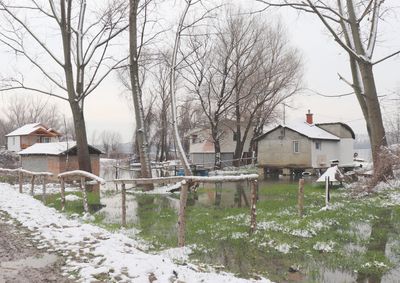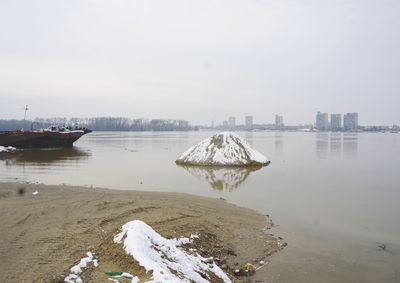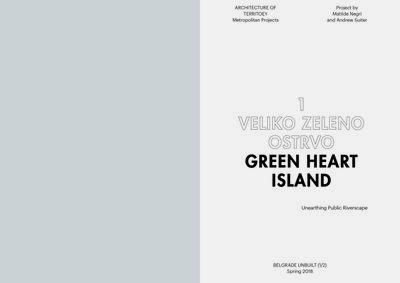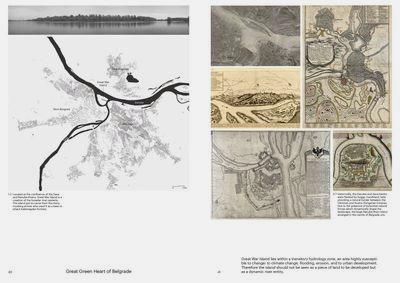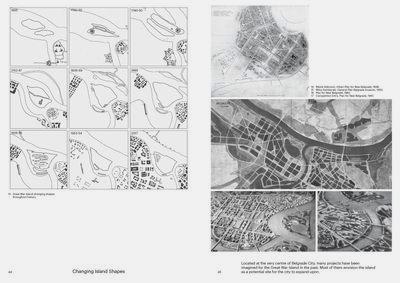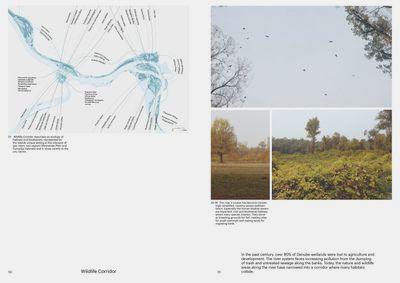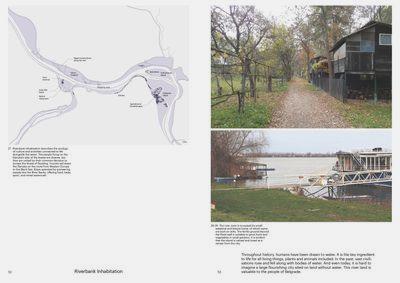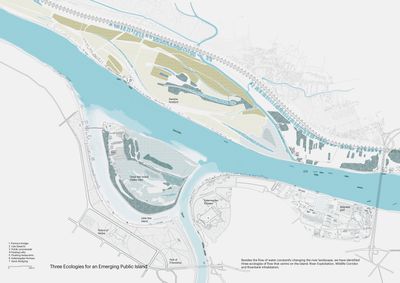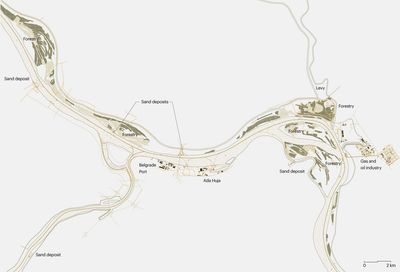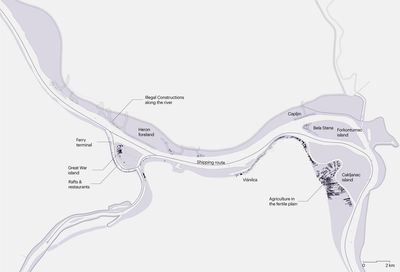Velico Zeleno OstrvoGreen Heart Island: Unearthing Public RiverscapeMatilde Negri and Andrew Suiter
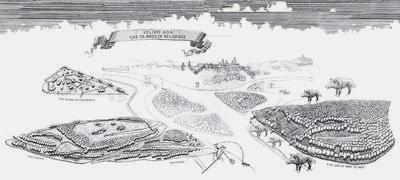
At the confluence of the Sava and Danube Rivers, a mound of sand was formed by the river’s sediment. The triangular-shaped island gained the militant name “Great War Island” due to its history as an important strategic point to conquer and defend the Belgrade fortress Kalemegdan. It remained uninhabited throughout history due to its high risk of flooding and unstable soil. When the construction of New Beograd began in 1948, the city government intended to harvest the island’s sand to reclaim the marshes of the adjacent Syrmian plateau, where the new city was to be built. However, the deposits of alluvial materials continually brought onto the island from the Danube prevented this endeavour. Instead, the smaller “Little War Island” served this purpose and was nearly destroyed. After being subject to various development plans in the early 2000s as a potential location for the Belgrade Zoo or an amusement park, the city finally decided in 2005 to reinstate the island as a “Nature reserve.” Today it is one of the few areas in the city where construction is forbidden as the island maintains the highest protection status as a “Landscape of outstanding features.”
Relatively good conditions, preserved wetlands and water vegetation, and the presence of many large rims made it possible for a vast number of bird species to stay, feed, and nest on the island. Many of those species are internationally listed as very important for the region’s biodiversity. Additionally, many fish and mammal species inhabit the land or the surrounding water masses. Though officially uninhabited, around a dozen people occupy small shacks in the island’s interior seasonally and cultivate their allotment gardens. In summer, its north-western tip used to be a leisure destination for urban dwellers until the lido was destroyed in disastrous flooding in 2006. A unique island asset is its position in the city, at the cross-section of impressive urban vistas: between two historical cores of today’s Belgrade, the Kalemegdan fortress and the medieval town Zemun. To fortify its character as a nature reserve in the city’s heart, the plan is to erect an observation centre and install a permanent pedestrian connection to make it accessible to the public.
The project explores how the delicate fluctuating landscape of the Danube River can serve both: a public recreational and an ecological purpose by unearthing extended public riverscapes. Green Heart Island is a sustainable approach to Danube’s riverfront development to secure river space and increase Belgrade’s flood resilience. The project intends to create a stage where the Danube River can thrive and present its power. Through the unearthing of a fluctuating riverscape, a new public landscape for people to witness the beauty of Danube wildlife is crafted. A set of new islands creates unique public riverscapes at the city’s heart. The design idea focuses on the Green Heart Island as the “inner sanctuary” and island ensemble.
